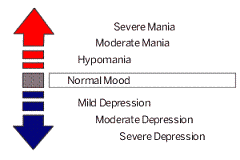The ADHD Bipolar Disorder connection
There has been an ongoing debate and a lot of confusion regarding the similarities and differences between a bipolar and attention deficit hyperactive disorder, and it is important to state that these are different conditions and while it is possible to suffer from both it is almost impossible to diagnosis yourself without help and advice from a licensed health care professional. In this article you will find all of the information you need to help you keep ADHD and a bipolar disorder separate in your mind, even if you are constantly finding that you exhibit symptoms associated with both conditions. You will also find information that helps to explain how and why these disorders are often connected, and why the creativity that often results from the manic behavior is sometimes beneficial and at other times dangerous for your mental and physical health. The more you know about your disorder the easier it will be to find a treatment plan that works for you.





